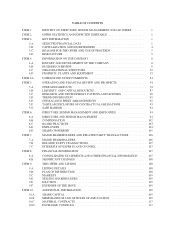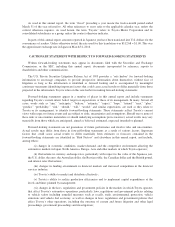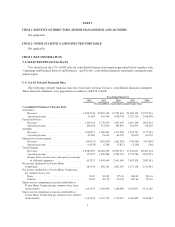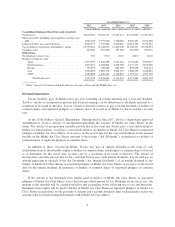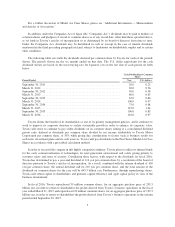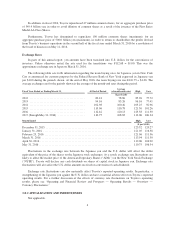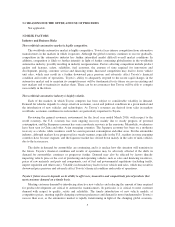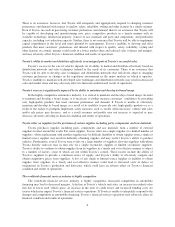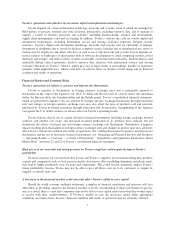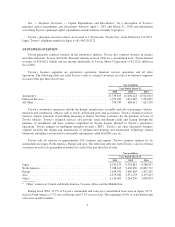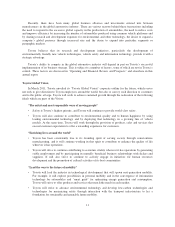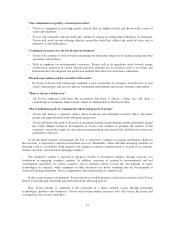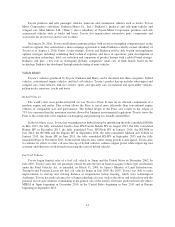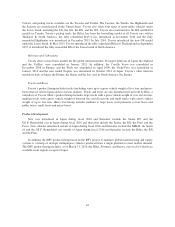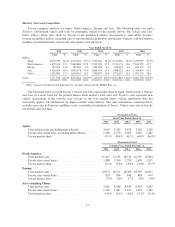Toyota 2015 Annual Report Download - page 12
Download and view the complete annual report
Please find page 12 of the 2015 Toyota annual report below. You can navigate through the pages in the report by either clicking on the pages listed below, or by using the keyword search tool below to find specific information within the annual report.Toyota’s operations and vehicles rely on various digital and information technologies.
Toyota depends on various information technology networks and systems, some of which are managed by
third parties, to process, transmit and store electronic information, including sensitive data, and to manage or
support a variety of business processes and activities, including manufacturing, research and development,
supply chain management, sales and accounting. In addition, Toyota’s vehicles may rely on various digital and
information technologies, including information service and driving assistance functions. Despite security
measures, Toyota’s digital and information technology networks and systems may be vulnerable to damage,
disruptions or shutdowns due to attacks by hackers, computer viruses, breaches due to unauthorized use, errors or
malfeasance by employees and others who have or gain access to the networks and systems Toyota depends on,
service failures or bankruptcy of third parties such as software development or cloud computing vendors, power
shortages and outages, and utility failures or other catastrophic events like natural disasters. Such incidents could
materially disrupt critical operations, disclose sensitive data, interfere with information services and driving
assistance functions in Toyota’s vehicles, and/or give rise to legal claims or proceedings, liability or regulatory
penalties under applicable laws, which could have an adverse effect on Toyota’s brand image and its financial
condition and results of operations.
Financial Market and Economic Risks
Toyota’s operations are subject to currency and interest rate fluctuations.
Toyota is sensitive to fluctuations in foreign currency exchange rates and is principally exposed to
fluctuations in the value of the Japanese yen, the U.S. dollar and the euro and, to a lesser extent, the Australian
dollar, the Russian ruble, the Canadian dollar and the British pound. Toyota’s consolidated financial statements,
which are presented in Japanese yen, are affected by foreign currency exchange fluctuations through translation
risk, and changes in foreign currency exchange rates may also affect the price of products sold and materials
purchased by Toyota in foreign currencies through transaction risk. In particular, strengthening of the Japanese
yen against the U.S. dollar can have an adverse effect on Toyota’s operating results.
Toyota believes that its use of certain derivative financial instruments including foreign exchange forward
contracts and interest rate swaps and increased localized production of its products have reduced, but not
eliminated, the effects of interest rate and foreign currency exchange rate fluctuations. Nonetheless, a negative
impact resulting from fluctuations in foreign currency exchange rates and changes in interest rates may adversely
affect Toyota’s financial condition and results of operations. For a further discussion of currency and interest rate
fluctuations and the use of derivative financial instruments, see “Operating and Financial Review and Prospects
— Operating Results — Overview — Currency Fluctuations,” “Quantitative and Qualitative Disclosures About
Market Risk,” and notes 21 and 22 to Toyota’s consolidated financial statements.
High prices of raw materials and strong pressure on Toyota’s suppliers could negatively impact Toyota’s
profitability.
Increases in prices for raw materials that Toyota and Toyota’s suppliers use in manufacturing their products
or parts and components such as steel, precious metals, non-ferrous alloys including aluminum, and plastic parts,
may lead to higher production costs for parts and components. This could, in turn, negatively impact Toyota’s
future profitability because Toyota may not be able to pass all those costs on to its customers or require its
suppliers to absorb such costs.
A downturn in the financial markets could adversely affect Toyota’s ability to raise capital.
Should the world economy suddenly deteriorate, a number of financial institutions and investors will face
difficulties in providing capital to the financial markets at levels corresponding to their own financial capacity,
and, as a result, there is a risk that companies may not be able to raise capital under terms that they would expect
to receive with their creditworthiness. If Toyota is unable to raise the necessary capital under appropriate
conditions on a timely basis, Toyota’s financial condition and results of operations may be adversely affected.
7


